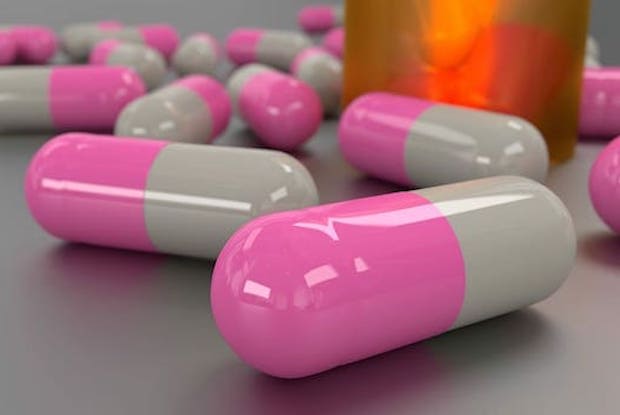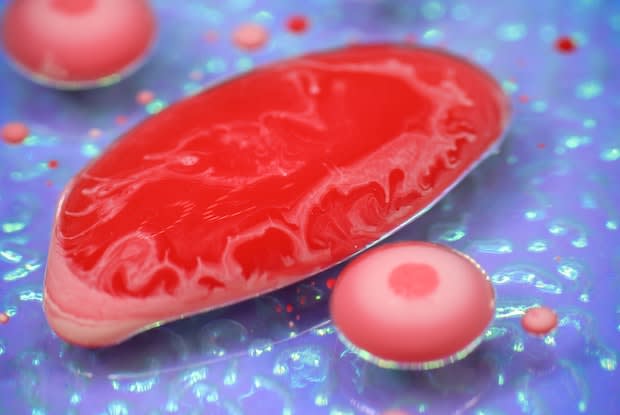Table of Contents
a. What is Sickle Cell Anemia?
b. Hydrea for Sickle Cell Anemia
a. What is Chronic Myeloid Leukemia?
b. Hydrea for Chronic Myeloid Leukemia
IV. Essential Thrombocytosis and Polycythemia Vera
a. What is Essential Thrombocytosis?
c. Hydrea for Essential Thrombocytosis and Polycythemia Vera
What is Hydrea?
Hydrea is the brand name of hydroxyurea and can be used to treat several different cancer conditions. Hydroxyurea is an anti-cancer chemotherapy drug. It is typically prescribed to treat sickle cell anemia, chronic myeloid leukemia, essential thrombocytosis, polycythemia vera, melanoma, refractory ovarian cancer, and head or neck cancer. [1]
Hydroxyurea is a myelosuppressive drug. This means that it reduces the number of blood cells that are produced by the bone marrow. Keep reading to learn about how Hydrea works to treat different conditions and how the medication should be taken.
Sickle Cell Anemia
a. What is Sickle Cell Anemia?
Sickle cell anemia is a hereditary disease that affects red blood cells. It is a specific form of sickle cell disease (SCD). If both parents have the sickle cell trait, then there is a one in four chance of the baby having sickle cell anemia. If only one parent has the trait, the baby cannot develop sickle cell anemia but will still have a 50 percent chance of carrying the trait. [2]
Get savings updates for Hydrea
Hemoglobin is a substance found in red blood cells (RBCs) that carries oxygen to the organs and tissues. The hemoglobin then takes carbon dioxide back to the lungs. [3] People with sickle cell anemia have defective hemoglobin (hemoglobin S or HgbS), which causes red blood cells to change shape. Red blood cells are usually a flexible disc shape, but defective hemoglobin can turn RBCs rigid and sickle-shaped.

b. Hydrea for Sickle Cell Anemia
Hydroxyurea is used to treat sickle cell anemia because it helps red blood cells remain disc-shaped and flexible. Hydrea works to help RBCs by increasing their amount of fetal hemoglobin (Hb F). A higher amount of Hb F reduces the chance of red blood cells becoming sickle-shaped. [4]
While Hydrea does not cure sickle cell disease or sickle cell anemia, it can reduce the risk of complications caused by the diseases. It may take several months before you begin to see the benefit of this medication. [4]
Chronic Myeloid Leukemia
a. What is Chronic Myeloid Leukemia?
Chronic myeloid leukemia (CML or chronic myelogenous leukemia) is a form of cancer that initially begins in the bone marrow. Myeloid cells in the bone marrow create blood and immune system cells. These include red blood cells, platelets, and most white blood cells. CML alters myeloid cells into CML cells, which grow and divide in the bone marrow before moving into the blood and other areas of the body. [5]
CML is a disease in which too many white blood cells are produced by the bone marrow. These white blood cells are called granulocytes or leukemia cells. They are abnormal and their growth prevents healthy white blood cells, red blood cells, and platelets from developing. [6]

b. Hydrea for Chronic Myeloid Leukemia
CML can be treated using chemotherapy drugs such as Hydrea. Chemotherapy is the destruction of cancer cells through medication and works by preventing cancer cells from growing and dividing. [7] Chemotherapy drugs enter the bloodstream so they are useful for treating cancers that may spread across the body.
Hydroxyurea does not entirely destroy chronic myeloid leukemia cells but can reduce white blood cells so that other treatment options can be used. [7] Hydroxyurea works very quickly to lower levels of white blood cells and can also shrink an enlarged spleen. When treating CML, Hydrea is typically used for a short period of time, or when other medications are not effective. [8]
Essential Thrombocytosis and Polycythemia Vera
Essential thrombocytosis and polycythemia vera are companion chronic disorders. They are both myeloproliferative neoplasms (MPNs) along with primary myelofibrosis. MPNs are similar disorders that involve the bone marrow overproducing an element of blood. Other similarities between MPNs can include enlarged organs, blood clotting, and scarring of the bone marrow.
a. What is Essential Thrombocytosis?
Essential thrombocytosis (ET) is a disorder that creates an increased number of platelets in the blood. ET is most common in females above the age of 50. [9] ET is a chronic disorder for which there is no cure. Excess platelets can lead to dysfunctional platelets which can cause abnormal blood clots or bleeding. Around 90 percent of people that have ET have a gene mutation that causes the disease. [10]

b. What is Polycythemia Vera?
Polycythemia vera (PV) is a disorder that creates an increased amount of red blood cells. However, people that have PV may also have an elevated amount of white blood cells or platelets and an enlarged spleen. PV is most common in males older than 60. [9] Like ET, PV is caused by a gene mutation. The cause of this mutation is unknown, but researchers believe that it is not a hereditary mutation. [11]
c. Hydrea for Essential Thrombocytosis and Polycythemia Vera
Hydroxyurea is often prescribed to treat ET and PV. The medication suppresses the production of blood cells by the bone marrow. When treating ET, this can help reduce the number of platelets in the blood. When treating PV, suppressed blood cell production reduces the number of red blood cells. As well as lowering the number of elements of blood, hydroxyurea also reduces the chance of complications such as blood clots. [12]
How is Hydrea Taken?
Hydrea is a tablet that should be taken with a full glass of water. You should swallow hydroxyurea whole without chewing or crushing the medication. Hydrea can be taken with or without food. If patients are unable to swallow the tablets whole, tablets can be dissolved in water. Once the tablet is dissolved, you should swallow the whole mixture. Hydrea is typically taken once a day. However, for certain cancers, your doctor may direct you to take it every three days. [13]
You should avoid coming into contact with hydroxyurea tablets whenever possible. You should wear rubber or latex gloves when handling the medication, and wash your hands before and after touching the bottle or tablets. [13]
The content in this article is intended for informational purposes only. This website does not provide medical advice. In all circumstances, you should always seek the advice of your physician and/or other qualified health professionals(s) for drug, medical condition, or treatment advice. The content provided on this website is not a substitute for professional medical advice, diagnosis or treatment.
